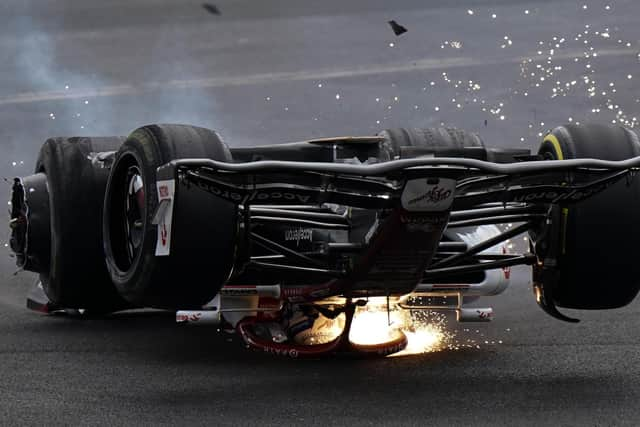What is F1 Halo? The device that saved drivers Zhou Guanyu and Roy Nissany in horror crashes in F1 and F2 at Silverstone
Two horror crashes took place at the Formula 1 and Formula 2 races at Silverstone on Sunday as racers’ cars flipped upside down.
Experts suggested the drivers could have been killed - if not for the life-saving ‘Halo’ device.
Advertisement
Hide AdAdvertisement
Hide AdThe Incident: What happened at the F1 and F2 on Sunday?


In the opening lap at Silverstone on Sunday morning, Formula 2 drivers Dennis Hauger and Roy Nissany underwent a huge collision.
Hauger’s vehicle was catapulted over the ‘sausage’ kerb and went airborne towards Nissany.
The racer’s vehicle landed on his rival’s at high speeds causing both cars to come to a rough stop in the gravel.
Miraculously, both drivers emerged uninjured from the crash.
Later in the Formula 1 race, Zhou Guanyu suffered a first-lap crash. The racer’s car flipped multiple times at high speed and skidded upside-down over the gravel.
His car flipped once more over a tyre barrier before it became stuck between the barrier and fencing at the first corner, trapping him inside.
George Russell, another driver involved in the crash, ran to check on the Chinese driver’s wellbeing.
In both incidents, television replays revealed that they had the ‘Halo’ device to thank for their safety.
Advertisement
Hide AdAdvertisement
Hide AdF1 Halo Explained: What is a Formula 1 Halo?
The Halo is a safety device that rests above the cockpit of a Formula 1 car, it is a titanium structure covered with carbon fibre.
It is designed to withstand massive impacts or block flying debris which optimise drivers’ chances of avoiding head trauma, like in the tragic case of Jules Bianchi.
As Formula 1 driver Zhou wrote on Twitter post-crash: “I’m OK, all clear. Halo saved me today.”
Why did Formula 1 need to include the Halo?
In 2015, the death of IndyCar driver Justin Wilson sparked calls for improved cockpit protection in open-wheel racing.
The driver suffered a traumatic brain injury after being struck by on-track debris at the Pocono Speedway.
Furthermore, Bianchi’s passing after his crash into a crane at the Japanese Grand Prix is also frequently referenced as a reason for the Halo.
Have other drivers been saved by Halos?
During the Bahrain Grand Prix in 2020, Romain Grosjean’s car snapped in half with the force of a crash at 53G.
Despite the inferno of fire that swallowed what was left of his car, Grosjean was saved from major burns and quickly brought to safety, avoiding serious trauma to his body or head.
Advertisement
Hide AdAdvertisement
Hide AdRoss Brawn, F1 managing director, declared adamantly after the race that without the halo it would’ve been a tragedy for Grosjean.
He said: “There is absolutely no doubt the halo was the factor that saved the day - and saved Romain.”
Lewis Hamilton credits the F1 Halo with saving his life
Lewis Hamilton was involved in a serious crash with rival Max Verstappen during the 2021 Italian Grand Prix.
Verstappen’s Red Bull car was sent airborne into the path of Hamilton, crushing the top of his Mercedes.
Post-crash, Hamilton said: “I feel very, very fortunate today. Thank God for the Halo which saved me, and saved my neck.”
In this case the Briton’s words can be taken quite literally as he suffered no body trauma.
